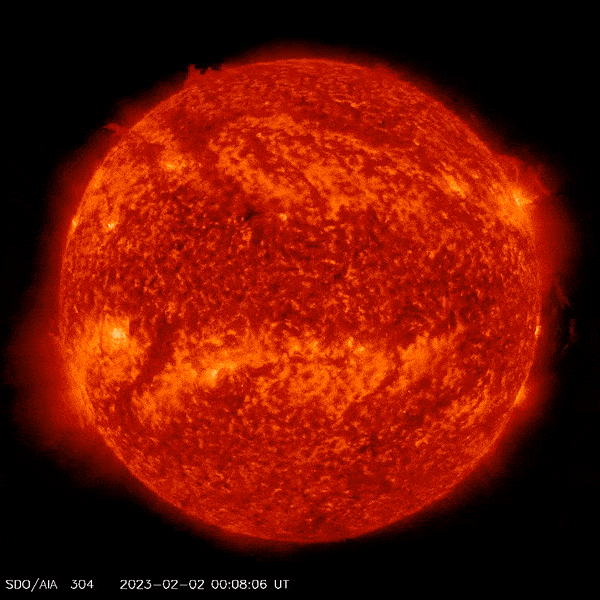Last week, part of the prominence on the Sun “broke off” and began to orbit the north pole of the Sun. This phenomenon was like a giant polar vortex. Scientists can’t explain this strange phenomenon yet. Space forecaster Tamitha Skov posted a video of this mysterious process on Twitter.

“Talk about Polar Vortex! Material from a northern prominence just broke away from the main filament & is now circulating in a massive polar vortex around the north pole of our Star. Implications for understanding the Sun’s atmospheric dynamics above 55° here cannot be overstated!” she wrote.
Talk about Polar Vortex! Material from a northern prominence just broke away from the main filament & is now circulating in a massive polar vortex around the north pole of our Star. Implications for understanding the Sun’s atmospheric dynamics above 55° here cannot be overstated! pic.twitter.com/1SKhunaXvP
— Dr. Tamitha Skov (@TamithaSkov) February 2, 2023
Scott McIntosh, a physicist and deputy director of the National Center for Atmospheric Research in Boulder, Colorado, said he had never seen such a vortex. But he notes that such strange events usually occur at the latitude of 55° of the Sun once per solar cycle.
Solar cycles are periodic 11-year changes in the activity of the Sun. During this period, things such as solar radiation, the release of solar material, sunspots and solar flares fluctuate. McIntosh described the northern vortex as a “living enclosure in the solar plasma” that appeared every 11 years in exactly the same place around the polar corona of the Sun. But even if scientists have observed such “fences” in the solar plasma, it has never led to the formation of a polar vortex, as recently observed.
Scientists believe that this phenomenon is associated with a change in the magnetic field of the Sun and believe that the polar region is very important in creating a magnetic field. But they don’t know what the exact reason for its formation is.
“Once every solar cycle, it forms at the 55 degree latitude and it starts to march up to the solar poles. There is a big ‘why’ question around it. Why does it only move toward the pole one time and then disappears and then comes back, magically, three or four years later in exactly the same region?,” said McIntosh.
Unfortunately, it is not yet possible to study the polar region directly, since scientists can observe the Sun only from the plane of the ecliptic or the orbit of planets. Although the current Solar Orbiter mission of the European Space Agency may provide some insight. But for a more detailed study, we may need another mission to fully understand what is happening on the Sun.
Earlier we reported on how a powerful solar flare disabled radio in Africa and the Middle East.
According to Space
Follow us on Twitter to get the most interesting space news in time
https://twitter.com/ust_magazine

